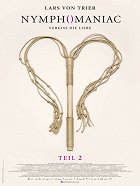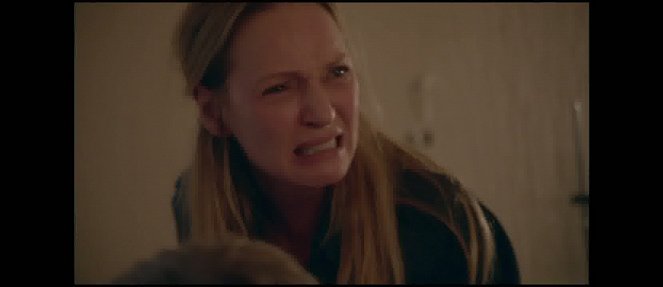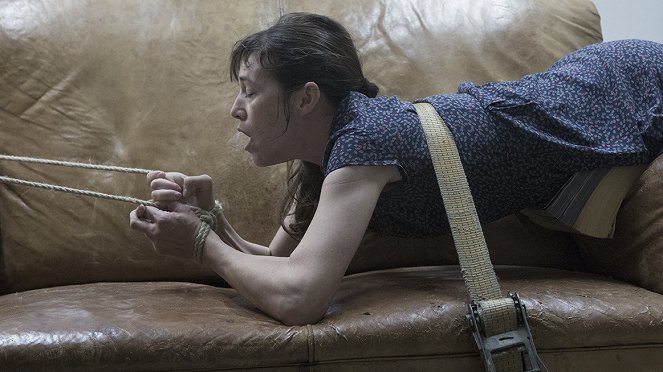Directed by:
Lars von TrierScreenplay:
Lars von TrierCinematography:
Manuel Alberto ClaroCast:
Charlotte Gainsbourg, Shia LaBeouf, Stellan Skarsgård, Stacy Martin, Willem Dafoe, Jamie Bell, Connie Nielsen, Mia Goth, Sophie Kennedy Clark (more)VOD (1)
Plots(1)
NYMPHOMANIAC is the wild and poetic story of a woman's journey from birth to the age of 50 as told by the main character, the self-diagnosed nymphomaniac, Joe (Charlotte Gainsbourg). On a cold winter's evening the old, charming bachelor, Seligman (Stellan Skarsgård), finds Joe beaten up in an alley. He brings her home to his flat where he cares for her wounds while asking her about her life. He listens intently as Joe over the next 8 chapters recounts the lushy branched-out and multifaceted story of her life, rich in associations and interjecting incidents. (official distributor synopsis)
(more)Videos (1)
Reviews (9)
(Volume I)… which settles down a bit in the second half, when the forced overlaps disappear, and the director returns to his favorite theme of "woman as evil incarnate." This makes the film less long-winded but then comes Bond, 3+5, and golden rain, and the awkward impressions are broken even more than in Melancholia; please shrink the Director's Cut to two hours and without the asexual sex, though that's not really the point here (unexpectedly, right?).
()
The first two-thirds of the second Nymphomaniac retain the power of the first film and, with the sadistic “Mr. K”, increases the audience’s discomfort to risky heights. But the final, “criminal” third raises the suspicion that Lars von Trier either didn’t know how to appropriately and meaningfully finish his work or he was overruled by the producers, who aimed for the biggest box-office profits possible (the absence of Shia LaBeouf in the role of Jerome, while all the others actors reprised their roles, suggests that the last third was filmed as an afterthought, after his contract expired). Finally, the last scene of the film is a bad joke, a slap with a glove full of coins that Nymphomaniac earned also by being split into two parts. In said scene, Trier completely (and unnecessarily) destroyed Stellan Skarsgård’s Seligman, a very important character for the story.
()
My enthusiasm from the first Nymphomaniac can be summed up with the fact that I didn’t run to the cinema for the second part and waited for it without much interest for four months. And with similar lack of interest I spent two hours watching it, during which I looked at my watch more often that it would be healthy. There is something there, of course, Trier doesn’t make stupid empty stuff, and the climax is quite vibrant, but this time, the rules of his game didn’t work on me.
()
The second Nymph()maniac romp is such a specific and unique product that I've decided to tolerate even the opinions of the writers of the "boo!" and below average reviews. Before I read the whiny compost of hypocritical declamations, of course. The menacing Director's Cunt is truly essential here, unlike in the first volume, and given its existence the abridged version need not be addressed at all. The uniqueness of the second, three-hour-long Nymph()maniac lies in the unique and almost constant transitions out of the medium, often related to the person of the director, which thus definitively underlines his egomania, but nonetheless opens the gateway to our perception of him through the means he controls (i.e., writing and directing), instead of those means (rhetoric) where he is more at a loss and constantly incurring considerable problems. The film thus comments not only on that famous Cannes Hitlerian empathy, accusations of misogyny, problems with censorship, or the expressive depiction of un-aestheticized nudity and violence. And it does so with a big fuck off in a similarly decently suggestive home-made abortion, subsequently likened to the slaughter of cattle, despite the fact that only a minute ago we could have been showering our love on a breathing aborted fetus. The director's role as a celebrity for senior actors suits Trier, which is why he can afford to deliberately and gleefully rip off scenes from his previous films, almost verbatim, in order to elicit audience reactions that rely on knowledge of the source instead of building the scene on its own merits (a child catching snow). Despite how terribly meta the whole thing is, it's fascinating how the individual sequences work when they're freed from a narrative superstructure for extended periods of time, and for example the whole SM passage with the absolutely bravura Jamie Bell is set in context so seamlessly and yet is so different that it actually underlines the whole idea of Trier's work, where there are no directorial mistakes, only audience ones.
()
I have seen and am reviewing only the director’s cut of both parts of Nymph()maniac. For five and a half hours, the narrative about various methods of physical (self-)satisfaction, which is unsatisfying for viewers, confronts the two greatest themes of all Freudian directors – sex and death. The most striking merger of the two occurs during a drastic miscarriage, at the end of which Joe trembles with arousal, and in the chapter with the dying father, whose black-and-white picture and tone of emotional blackmail give such a (pseudo)artistic impression that it is most likely one of von Trier’s many tactics aimed at depriving viewers of what they want. In the course of both films, he employs a disturbing number of diversions, notional parentheses, jumps in time and changes in the style of the narrative in order to evoke a feeling of unease that makes it impossible to unobtrusively construct a story. The film brings to mind Zanussi with its hypermedia-style encyclopaedic layering of information, Buñuel with its thematisation of fetishes and unstable identity, Bergman with the intimate exploration of relationships, and Tarkovsky with its spiritual excitement (including a direct quote from The Mirror). Though this eclectic and intermedia compilation of styles is held together by the framework narrative, I would not call it a coherent form. How could there be a coherent film that is constructed as a dialogue between two seemingly incompatible worldviews (asexual and nymphomaniac) into which von Trier constantly tries to draw the viewer, whether by shattering visual taboos (I have never seen a more graphic depiction of abortion in a film) or by breaking down the fourth wall between fiction and reality (the camera reflected in a mirror, obvious parallels between the provocatively free-thinking views of Joe and von Trier himself). Despite all of the sexual explicitness and the extreme suffering of the female protagonist, the treatment of the female body seemed less exploitative to me than in, for example, Blue Is the Warmest Colour. Even though the woman becomes a sexual object several times, especially in the first part, and through most of the film her happiness depends on the man’s stamina, availability and abilities, her depiction elicits pain, compassion and disgust more frequently than pleasant feelings. In this context, the most beneficial scene of the director's cut may be the aforementioned abortion, which, with an openness that I believe will be particularly unpleasant for men, demonstrates throughout both films the intensified forms of defending a woman’s right to decide what she does with her own body. Showing us what we do not want to see is closely connected with consideration of that which we do not want to think about. In my opinion, such a provocation makes sense, like Nymph()maniac as a whole. 75% for part I, 80% for part II.
()



Ads